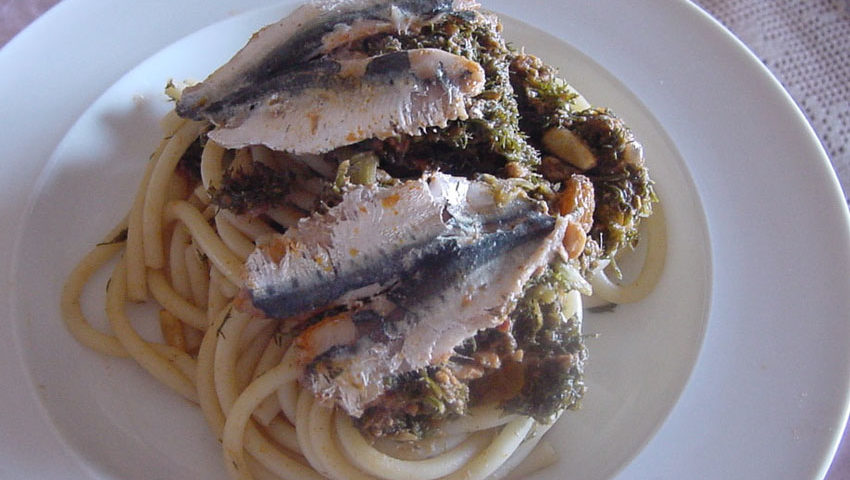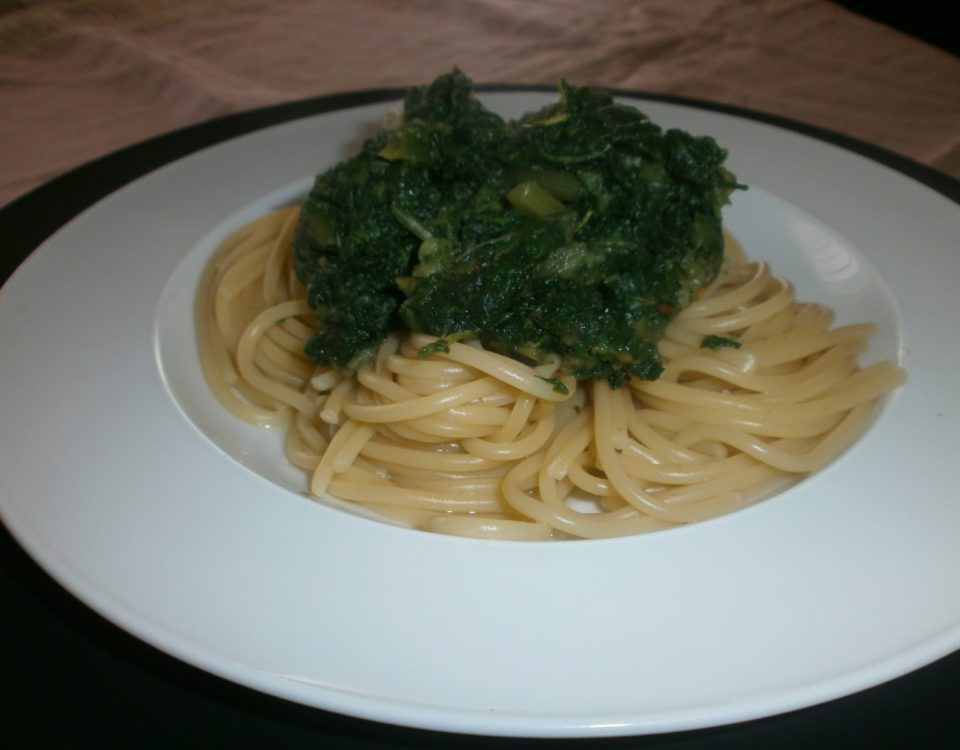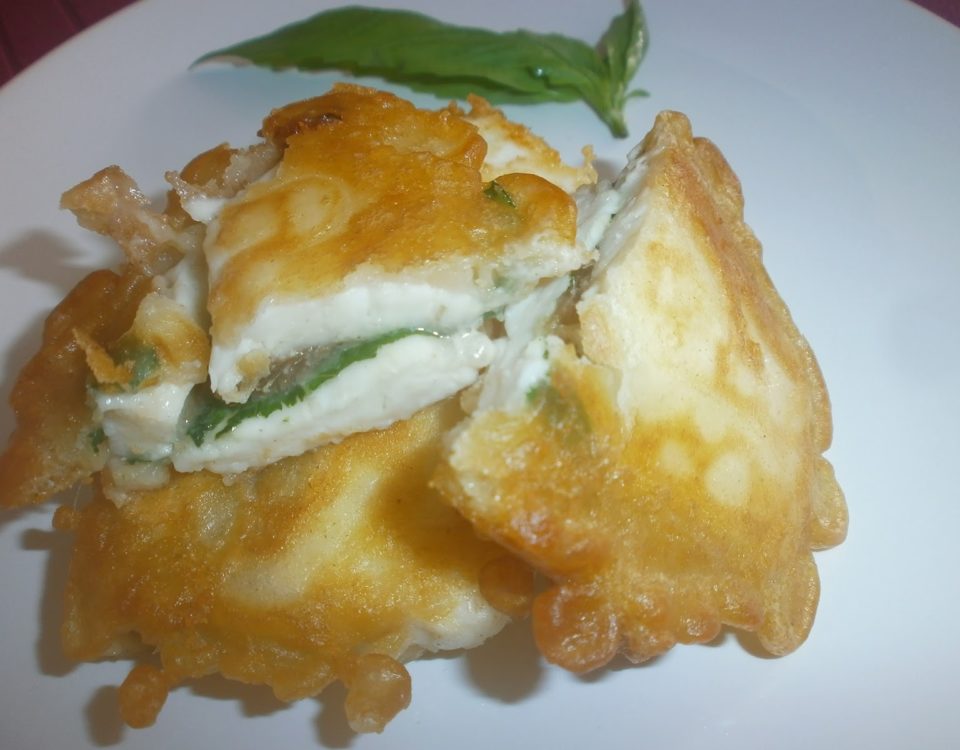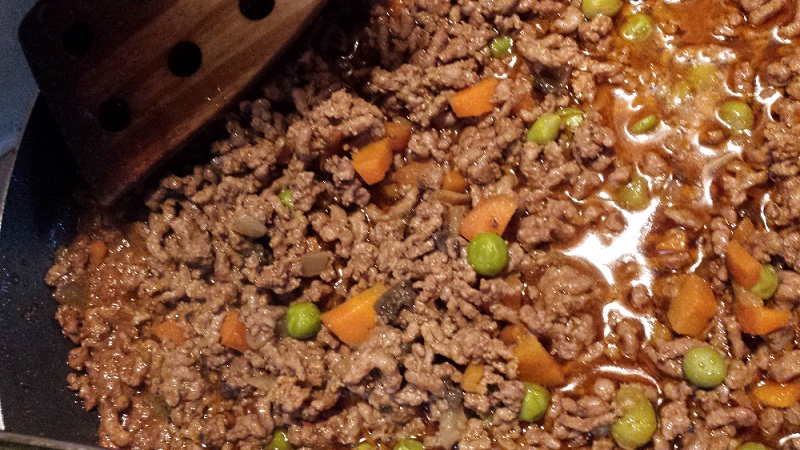
Colourful bell peppers in sweet and sour sauce
aprile 20, 2011
Marzipan sheep, the symbol of Easter in Sicily
aprile 23, 2011Do you know how to prepare the famous Sicilian pasta with sardines? First of all let’s specify that in Sicily we learn that the period for fishing and eating sardines is during the months that have a “R letter”. (In Italian are February, March, April, September, October, November, December).
On the whole, I would say that there are two main recipes for this pasta: the red one and the white one. What does it mean? It means the version with the tomato paste and the version with saffron instead.
Ingredients & preparation for 4 people:
– 400 gr. bucatini (long and thick shaped pasta like in the pic above)
– 250 gr. fresh sardines
– 400 gr. wild fennel
– 5 anchovy fillets
– 30 gr. sultanas
– 30 gr. pine nuts
– olive oil
– a small onion thinly chopped
– salt
– 6 ts of breadcrumbs
– 20 gr. saffron powder (for the white/yellow version)
– tomato puree or concentrated tomato extract (for the red version)
2. In a sauce pan put a drizzle of olive oil on a medium heat, add the chopped onion and let it brown for a couple of minutes.
Add the anchovy fillets cutting it in small pieces using a wooden scoop or spatula just like in the pic on the right. They have to melt and become a paste.
3. Then put sultanas and pine nuts mixing all together.
4. Take half the quantity of the sardines, (leaving out the ones that are not broken that will be used after) and mix them in the sauce in small pieces too.
5. At this point add the saffron if you are doing the white/yellow version, or add some tomato puree if you prefer the red one (pic on the left). It’s important to melt the concentrated tomato that has to become again a sort of paste. You can put a bit of fennel water to help melt the tomato puree.
6. Finally put the chopped fennel in the pan, together with a dipper full of the water in which has cooked. Mix well and place on top of the fennel the remaining sardines that should all be in one-pieces.
7. Let cook the sauce with a lit for about 10-15 minutes on a low heat. (Picture below)
8. In the meantime cook the pasta (bucatini or ziti) in the remaining fennel water as usual and drain it. If the water is not enough for all the pasta add some more water but remember to check the pasta on salt before draining it.
9. While pasta is cooking, in a small frying pan on a medium heat prepare the breadcrumbs with a drizzle of olive oil and stir the two ingredients until they become homogeneous and kind of dark brown in color (but not burnt).
10. Now you can either place it on a serving dish covering it with all the condiment and sprinkle the breadcrumbs on top and eat it as it is or doing the same process but placing it on a oven tray and bake it for about 10 minutes at a temperature of 200° C. Serve hot.
Close your eyes for a second and enjoy the great Sicilian taste, the earth and the sea forever bond!






9 Comments
I've always wanted to know how to cook this recipe. My Dad is Sicilian and loves fennel, but living in the USA we don't find wild fennel. Sultanas, what is the equivalent in USA? When I Googled sultanas it says they are white grapes, but yours are darker…does the color make a difference in the flavor? Now I just have to calculate grains in to ???
Sultanas are like raisins but a bit sweeter, we distinguish in these two types, but in the end they are quite similar.
Gr = Grams or grammes
This is a tradition on St Joseph's Day, March 19th
@Anonymous:
Sfinci are traditional of St. Joseph's Day, no doubt about it. It's true that Pasta con le sarde was made that day as well, but many many years ago; nowadays things are changed. Many Sicilians do not know that and do not cook it for Saint Joseph, also because it's a working day. We do prepare it for special occasions in general!!!
I meant to say the conversion from grams to, teaspoons to cups.
@PinkAcorn: Well I totally understand, I have many books of recipes in English and I always have to look for the correct conversion, in anycase the web is full of websites that can help you!
There is a commercial product called: CUOCO 'seasoning for macaroni with sardines' that we always use. We like this with a tomato sauce—your own (not chunky) but a meatless good flavored one without much basil or oregano that can take away the wonderful sardine/fennel taste. Here in the Buffalo, NY area we can buy a 14 1/2 oz. can for less than $4.00. These ingredients and maybe some canned but rinsed sardines makes a wonderful sauce. Top macaroni—buccatini or some long type of macaroni with this sauce and then some toasted breadcrumbs makes a great meal. We eat this periodically through the year and not only for St; Joseph's Day. When we visited family in Sicily we tasted it freshly made with all regional ingredients. buono
No place in so cal that I know of, sells fresh sardines.
For reference: In general use 1 lb pasta for 400g, 1/2 lb for 250 g, 30 grams=1 fl oz or 1 tbl, 10 g=1 teaspoon. The nuts will be more than a tablespoon to an oz, as will the raisins (I usually use dried currants rather than american raisins). Canned sardines (boneless in Olive oil) work well if you can't find fresh – fresh usually always available in Oriental fish markets.